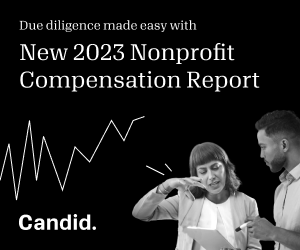Supporting social innovation from the grassroots up: Insights for fostering breakthroughs

Social impact organizations and nonprofits around the globe fight tirelessly to make the world a better place. Their teams are connecting with their communities, building coalitions, and coming up with new solutions to some of the world's toughest problems. And while innovative solutions to social issues can come from anywhere, time and time again they are most likely to come from people who are closest to the problems they're trying to solve.
Since 2013, we've been engaged in an experiment at Google.org — which we call the Google.org Impact Challenge (GIC) — to unearth breakthrough ideas from unexpected places. Nonprofits and social enterprises let us know what they're working on — ranging from tackling climate change with artificial intelligence to building safer neighborhoods with crowdsourced data — and their vision for where it could go. We work with a panel of experts from the community to select ideas with the greatest potential for impact and offer grant funding, technical support, and volunteer time from Google employees who help develop their ideas.
To better understand what's working and where there are persistent barriers to social innovation, we recently surveyed eighty GIC grantees with the help of the LEAP Pecaut Centre for Social Impact and the Boston Consulting Group.
The most important takeaway is that social innovators are calling on funders to step up, think big, and support capacity building. The data show that 90 percent of surveyed organizations ranked funding as one of the top three challenges they face, 56 percent struggle with developing sustainable strategic plans, and 48 percent struggle to retain talent. While these obstacles are not new, it's significant that these findings hold true across geography, issue area, and organizational maturity.
While we're still learning about the most effective ways to support social innovation, we'd like to share some insights that will guide our work in this space and we hope will encourage others to join in:
Community engagement uncovers breakthrough solutions
This may be the most important principle, since too often philanthropy can be a walled garden. It's important to have a vehicle that opens the gate to new ideas that you wouldn't necessarily be exposed to without intentional focus. This can be achieved by lowering the barriers to entry, partnering with social sector organizations who have local expertise to spread the word, or asking the local community to assist in making funding decisions — again, because those closest to the problem are best positioned to select the solution.
One of our favorite examples is StoryWeaver from Pratham Books, a free open-source digital library for the 40 percent of children globally who don't have access to storybooks in their native languages. We might have passed over the proposal, given how many barriers there were — from the cost of book production to the complexities of localization — but when we sought guidance from the community, their support was resounding: Pratham Books was on the precipice of something huge. We listened, and today StoryWeaver has grown its offering from eight hundred to twenty-thousand storybooks spanning sixty languages, with more than five hundred thousand active readers across the Global South.
Flexible capital fosters innovation and increases potential
Funding new ideas can feel risky — but merely maintaining the status quo comes with its own risks. We see every day the boundaries of what's possible with our current set of solutions. Nonprofits often are hemmed into sticking with existing program models due to a lack of funding security. That's why funders should work with organizations to determine how best to allocate the grant funds and, in most cases, offer three years of “runway” to give them space to pivot and explore new models.
The Rumie Initiative, one of the winners of our Canada GIC in 2017, had the idea of building a low-cost education platform that addressed the lack of localized content for youth in Indigenous communities. With funding directed toward the messy, hard-to-measure work of idea formation, the initiative has gone on to build the largest repository of Indigenous learning content in Canada, with resources in 113 Indigenous languages and dialects — helping to preserve Indigenous culture and language.
Wraparound support multiplies impact
Funding alone is important, but ancillary support can further accelerate the impact of the organization and multiply the value of the grant.
When we came across Infoxchange, an NGO with more than thirty years of experience delivering technology for social justice, we asked ourselves how we could provide differential value to a mature organization. The Infoxchange team was looking to digitize their services and connect people in need with basic food and resources through a free app called Ask Izzy. So, in addition to funding, we marshaled a team of Google engineers and project managers to help support app development over the course of six months. As a result, Infoxchange has been able to connect more than two million people to over twenty-five thousand not-for-profit, community, and government services.
At Google.org we're driven by an attitude of optimistic urgency to tackle big challenges on a global scale. But we also know that we don't have all of the answers, so it's crucial to take the time to listen and learn from organizations and stakeholders who intimately understand the challenges their communities are facing in order to co-design solutions that people want and need. When communities steer their own destinies, investors take chances on new ideas, and support is offered in new and creative ways, we stand a better chance of making progress against society's toughest problems.
Kevin Brege is global lead for Google.org Impact Challenges at Google.





